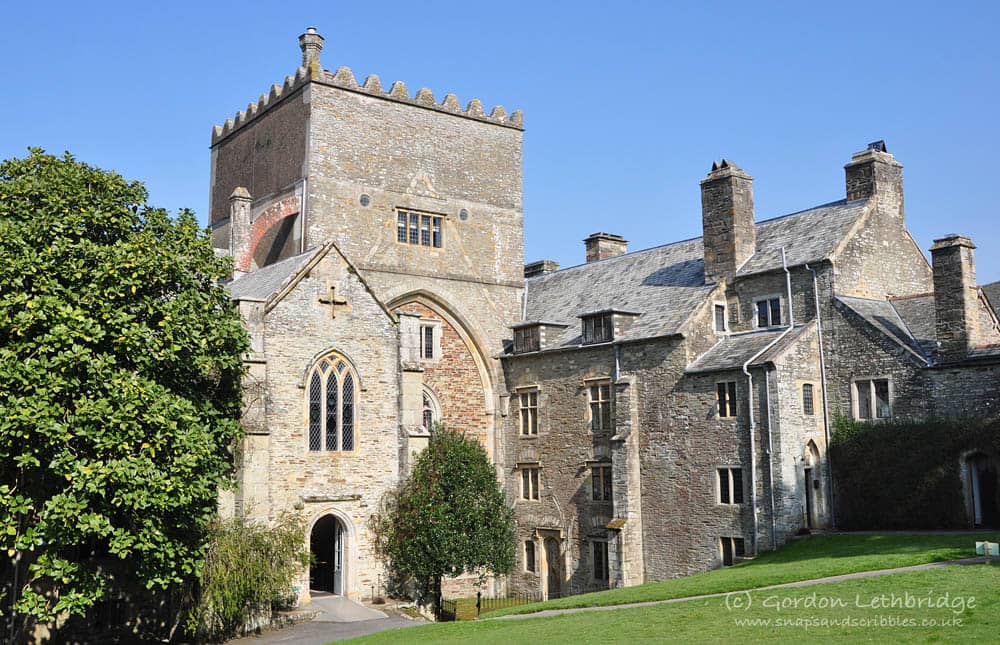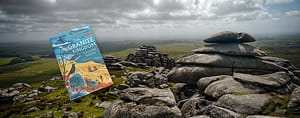Dartmoor National Park occupies a large portion of Devon just to the north of Plymouth. It has recently earned fame as the setting for War Horse and was the setting for Conan Doyle’s Hound of the Baskervilles. The granite massif that rises up from the Devon lowlands is, for the most part, a bleak and desolate moorland; a unique landscape in Britain. It was for this reason that, during Napoleonic times Dartmoor prison was built there.
There are plenty of things to do on Dartmoor and, what I like to call Greater Dartmoor. Here then are my Top Ten in no particular order. How many are in your top ten?

1. Cycle Drake’s Trail
Drakes Trail is a hiking and cycling route from Plymouth to Tavistock passing by Sir Francis Drake’s birth place and Buckland Abbey which he owned in later years. Only 21 miles (34km) it is easily done in a day on a bike. Despite the name the trail is not all about Sir Francis Drake but takes you through superb countryside along the wester edge of Dartmoor You can find out more at www.drakestrail.co.uk. Bikes can be hired at Tavistock Cycles.

2. Visit Buckland Abbey
The former Cistercian abbey was home to Sir Francis Drake and is now a National Trust property. It is also home to a recently discovered Rembrandt painting that was thought to have been one of the artist’s students. Part museum, part house Buckland Abbey is filled with artefacts relating to Drake, Sir Richard Grenville and life at the time. One of the highlights is Drake’s Drum. For more information visit the National Trust website

3. Go to Prison
Dartmoor Prison is a bleak and depressing looking place built on the edge of Princeton. It is not possible to visit the prison unless you are visiting an inmate. However there is a very informative, but small museum that is worth visiting. Originally built to house French prisoners of war during Napoleonic Wars it was later used as a maximum security prison for criminals. As the museum documents all the changes up to the present day it gives a fascinating insight in to the changes in the prison service over the years. More information at www.dartmoor-prison.co.uk

4. Take a hike
Dartmoor can present a real challenge to hikers with windswept and isolated moorland. Equally there are gentle more relaxing walks through wooded valleys and walks suitable for children. Bagging tors, the granite hills of Dartmoor, is popular with hikers who are rewarded with views across the expanse of National Park. The Dartmoor National Park Guides offer guided walks and you can download audio walks for your mp3 player, smartphone or iPod. More walking options can be found at the Dartmoor Tourist Information website.

5. Dart adventure
The River Dart on the eastern fringes of Dartmoor has some of the best mid-grade white water in the UK. Kayaking or canoeing on the river takes you through some spectacular scenery and some thrilling adventure experiences. This activity however is limited to October through to March because of water levels. An accredited adventure centre that offer kayaking and canoeing is Adventure Okehampton.

6. Take an afternoon tea
The Moorland Garden Hotel sits on the very edge of Dartmoor overlooking the Tavy Valley. It celebrates its 80th anniversary this year with a number of special events. However after a day on Dartmoor it is a real pleasure to stop by for a decadent afternoon tea on the terrace outside their award winning Wildflower Restaurant. It is worth booking a dinner as it has won the Best in the South West award for its restaurant. For a review see my earlier post. To book visit www.moorlandgardenhotel.co.uk

7. Visit a garden
The Garden House is owned and administered by the Fortescue Garden Trust and contains over 6000 varieties of plants. Numerous different gardens have been planted on the side of a valley. There are wildflower and bulb meadows, cottage gardens, an acer glade and many other themed gardens each reaching their best at different times during the year. It is a plants person’s paradise. For more information visit www.thegardenhouse.org.uk

8. The clappers of Dartmoor
The clappers of Dartmoor are not a group of applauding musicians but a tip of bridge made of large flat slabs of granite supported on piles or pillars of more granite. There are several on Dartmoor but the best example and most easily accessible is the one at Postbridge which dates back to the 13th century. There is a pleasant and short circular walk here too.

9. Explore Dartmoor on horseback
For those with a passion for riding and a reasonable amount of equestrian skills there is no better way to explore Dartmoor than on horseback. Liberty Trails offer luxury riding holidays for keen horse riders who want to experience the wilderness of Dartmoor from the saddle. Luxury accommodation, gastronomic delights and experienced guides are all part of the package and for those days out of the saddle or for those who do not ride there are vintage car tours and a chance to learn the skills of archery, falconry and or fishing. For more information visit www.libertytrails.co.uk

10. Dartmoor through the lens
With such stunning and magical landscapes Dartmoor is a photographers paradise. Achieving the desired results though is not always easy even for a competent photographer. Discovering those hidden corners and great viewpoints is difficult in a short visit. Taking a day long Dartmoor photography workshop is one way to discover Dartmoor’s photographic secrets. Dartmoor 20 have a number of photography workshops and are very reasonably priced. For more information visit www.dartmoor20.co.uk
There are more ways to experience Dartmoor’s rugged and mystical landscape. I have only list 10 but you undoubtedly will have a few more to add. What experiences are in your Dartmoor Top Ten that are not covered here? Share them with us in the comments below.



